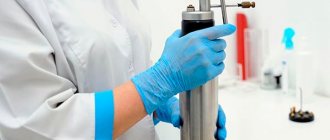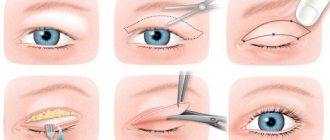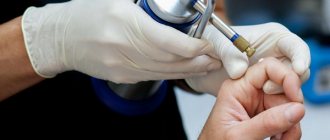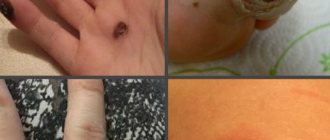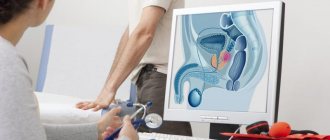Papillomatosis is a very common sexually transmitted infection of a viral nature.
According to medical statistics, the causative agent of this disease is found in the body of every fifth inhabitant of the planet.
Properties of the pathogen
The disease is caused by a tiny microorganism – the human papillomavirus.
Once in the body, it is localized in the skin and mucous membranes, mainly of the genital organs.
Papillomavirus has many subtypes, including oncogenic ones.
Ways of spread of infection
The papillomavirus is most often transmitted sexually
The papilloma virus is most often transmitted sexually through sexual contact between a healthy person and a sick person.
This can be either vaginal sex, anal sex, or oral sex.
Infection with papillomavirus can also occur at home - in swimming pools, baths, saunas, i.e. in places with high humidity.
Under these conditions, the pathogen can retain its viability and pathogenic properties for some time.
A sick mother can transmit the virus to her child during childbirth as it passes through the birth canal.
In addition, scientists do not exclude the possibility of hematogenous transmission of infection.
The incubation period of the virus can last quite a long time, up to several years, without revealing itself.
This explains the often asymptomatic, latent carriage and course of the disease.
Signs of infection
The main symptom of the disease is the appearance of genital warts.
In men, they are localized on the head of the penis, in the groove around it, on the frenulum of the foreskin.
Sometimes genital warts are located around the anus.
Condylomatosis in men can be accompanied by the appearance of condylomas - warty growths on the skin.
In appearance they resemble cauliflower and have a long stem.
Formations on the skin can be papillomas that have a papillary shape and are prone to fusion.
Or flat warts, most often located on the surface of the feet, the skin of the penis.
Diagnosis of infection
HPV in men is diagnosed based on obvious clinical signs.
Formation of genital warts on the penis
This is the formation of genital warts on the penis.
And also in the anus area.
The main thing in diagnosing HPV is the results of laboratory tests.
During a general blood test, when infected with papillomavirus, a normal number of leukocytes is detected.
Along with an increase in the level of lymphocytes and monocytes among them.
Finally, the diagnosis of HPV is verified by PCR testing.
During such an analysis, the genome of the virus is detected in the patient’s secretions, even at its minute concentration in the material.
Contraindications to laser removal of genital warts
Removing genital warts with a laser has many advantages - this procedure does not cause pain and is performed in a short period of time. After healing, the formation of scars and scars is excluded. The laser beam acts precisely and does not injure surrounding tissues. No long-term rehabilitation is required.
Using the procedure, you can get rid of the discomfort caused by the tumor. Condyloma can become malignant; removing it reduces the risk of cancer. Traumatization of the growth leads to the fact that it becomes painful and inflammation appears.
Despite the effectiveness of laser removal of papillomas and condylomas, there are some limitations to the procedure. The doctor will be able to determine the possibility of performing the operation by conducting an examination, assessing the general health of the patient.
The procedure cannot be performed if the patient’s condition is serious, there is oncology or acute infectious diseases. Limitations may include the presence of autoimmune pathologies, blood clotting disorders, and various mental disorders. The advantage of using a laser is that growths are removed quickly and the likelihood of adverse reactions is minimal.
What types of condylomas are there?
There are several types of condylomas based on their shape:
- Flat;
- Pointed;
- Wide.
Flat condylomas are flush with the skin and look like spots.
They are rare, but are considered the most dangerous.
Condylomas acuminata are growths.
They look like warts and rise above the surface of the skin.
Widespread condylomas are called condylomas, which are caused by the entry of treponema into the body.
Pointed formations are quite common.
Treatment of condyloma in the anus
In the presence of anal genital warts, doctors at the Yusupov Hospital carry out a combination treatment that combines conservative therapy with surgical removal of anal warts. In most cases, treatment is symptomatic and restorative. Therapy aimed at eliminating the cause of the disease consists of destroying the papilloma virus in the human body. It is complicated by the polymorphism of the virus and is characterized by high cost. At the Yusupov Hospital, doctors treat anal warts at a price that is lower than in other metropolitan clinics.
Proctologists at the Yusupov Hospital use the following methods for treating anal warts:
- Physical (cryodestruction, laser removal of polyps, diathermocoagulation, electrosurgical excision, radio wave surgery);
- Chemical (destruction with trichloroacetic acid, feresol, solcoderm);
- Immunological (alpha, beta and gamma interferons);
- Combined (combined use of various physical, chemical and medicinal methods).
Doctors at the proctology department warn patients that the relapse rate with destructive methods is high due to the fact that the human papillomavirus persists in the clinically unaffected tissue that surrounds the condyloma. For this reason, patients are prescribed interferon or its inducers (Viferon, Gepon, Kipferon, Cycloferon Ridostin), as well as other activators of antiviral immunity (Immunomax) as adjuvant therapy in combination with surgical excision. In addition, examination and treatment are carried out in the presence of condylomas in the anus of both sexual partners. During the period of therapy, patients are advised to abstain from sexual intercourse. Barrier contraception should be used for six months after the end of treatment. The most effective are combined methods of treating anal genital warts, which are based on a combination of destruction of visible lesions with the administration of antiviral immunity activators (interferons and their inducers).
The main difference between destructive methods is that when they are used, condylomas are destroyed quickly, often simultaneously. When using other methods, they are eliminated within a few hours or weeks. As a rule, this time is comparable to the healing time of lesions after exposure to physical methods. According to various authors, the frequency of relapses does not depend on the choice of treatment method. Thus, the obvious advantages of physical methods are neutralized. To use physical destructive methods, special premises, expensive equipment, and trained personnel with certificates for this type of medical activity are required. All this limits the use of these methods in widespread practice, especially in small medical centers or in areas where the clinic has only dermatovenerological, gynecological or urological offices. In this regard, conservative treatment methods that can be applied by any practitioner are of particular interest.
Provocateurs of appearance
Certain conditions are required for formations to appear.
These include:
- Alcohol consumption;
- Smoking;
- Lack of proper nutrition;
- Little physical activity;
- Fatigue, psycho-emotional overload;
- Neglect of hygiene;
- Cracks in the skin of the genital organs;
- Weak immunity;
- Hormonal imbalance;
- Lack of barrier contraception;
- UV irradiation.
If several factors are present at once, this can accelerate the development of the disease.
Treatment methods
Treatment of genital warts is carried out both at the initial stage and when tumors reappear. First of all, the doctor prescribes powerful antiviral and immunomodulatory drugs to activate the immune response and strengthen the body. In addition to drug support, in the Kuntsevo Treatment and Rehabilitation Center, condylomas are removed using modern methods. The greatest effect is achieved by electrocoagulation with current, radio wave destruction, laser coagulation, and cryodestruction with liquid nitrogen. The choice of removal method is up to the doctor.
Clinical manifestations
Patients with condylomatosis may experience discomfort in the lower abdomen.
They are short-term, mild in nature.
Men rarely attach importance to them, citing other possible problems.
There are burning and itching sensations in the places where condylomas form.
Pain during intercourse is often noted.
The general condition may be accompanied by discharge from the urethra.
Delaying going to the doctor can lead to the development of new symptoms.
Their appearance indicates the involvement of other organs in the process.
Patients begin to complain of weakness, apathy, and lack of physical strength.
Headaches develop, and body temperature may increase.
It is often accompanied by chills and lethargy.
Treatment methods
Treatment of genital warts is carried out both at the initial stage and when tumors reappear. First of all, the doctor prescribes powerful antiviral and immunomodulatory drugs to activate the immune response and strengthen the body. In addition to drug support, in the Kuntsevo Treatment and Rehabilitation Center, condylomas are removed using modern methods. The greatest effect is achieved by electrocoagulation with current, radio wave destruction, laser coagulation, and cryodestruction with liquid nitrogen. The choice of removal method is up to the doctor.
Why are condylomas dangerous?
Condylomatosis can be called a benign disease.
It is important to eliminate the growths in time, otherwise their area may increase.
Injury and complications may develop.
A bacterial infection can be associated with papillomavirus.
This will lead to the development of inflammation, which is called balanitis or balanoposthitis.
When the formations are localized in the lumen of the urethra, infection causes urethritis.
It manifests itself as pain when passing urine.
Damage to the mucous membrane by inflammation causes strictures to appear.
These are connective tissue cords that appear in the lumen of the canal and tighten it.
As a result, a person experiences difficulty in excreting urine and new infectious processes.
Condylomas of the anal area cause damage to the mucous membrane of the anus.
If a bacterium gets on an open wound surface, paraproctitis develops.
This is an inflammation of the anal area of a purulent nature.
Characteristic symptoms are bleeding during bowel movements and severe pain.
Condylomatosis has a rather unaesthetic appearance.
This provokes psychological discomfort in men and entails a decrease in libido.
Problems arise during sexual intercourse.
The most dangerous complication is the development of a malignant neoplasm at the site of the condyloma.
An oncological process, cancer of the glans penis, develops.
Why do genital warts in men need to be removed?
Single small condylomas do not need to be removed if they do not bother the patient and do not cause concern to the doctor. In this case, constant monitoring is indicated. However, in most cases, doctors recommend getting rid of skin growths. This is necessary to prevent the development of complications.
In men, genital warts can cause the following complications:
- injury to tumors when wearing tight clothes, physical activity, during sex;
- infection of the wound surface;
- development of balanoposthitis as a result of suppuration;
- secondary urethritis (inflammation of the urethra);
- progression of infection with transition to prostatitis;
- further tissue growth with transition to healthy areas;
- genital cancer (exact mechanism unknown).
How to get rid of condylomas forever?
Some practical tips:
- It is advisable to get vaccinated against HPV infection before starting sexual activity. This will significantly reduce the risk of contracting the virus. If infection does occur, the disease will be much easier.
- If you didn't get the HPV vaccine at age 14, don't wait, get it now.
- If condylomas appear, get tested, visit a gynecologist, urologist and proctologist.
- Remove condylomas in a way that is accessible to you. Of course, it is better to give preference to laser vaporization of condylomas.
- Get treatment for HPV infection.
- Stimulate your immune system.
Ointment for papillomas on the head
There are methods of treating human papillomavirus infection with drugs.
These include removal methods:
- cytotoxic
- chemical
The cytotoxic method involves applying an ointment to the scalp that blocks cell division and causes cell death.
This is a long-term treatment.
The ointment should be applied for several days in a row.
Then a break is taken and the results are assessed.
If the papilloma does not disappear, the course is resumed.
It can be suspended and resumed several times.
Treatment lasts 4-5 weeks.
If there is no result, removal of the papilloma in a more reliable way is indicated.
Another method is chemical.
It involves the simultaneous destruction of papilloma.
The procedure is performed only by a doctor.
Concentrated acid solutions are used.
They simply cause necrosis of the skin in the area where the condyloma is located.
Great care is required when applying such products.
After all, they destroy healthy skin just as easily as skin affected by papillomavirus.
The procedure has both pros and cons compared to the physical removal of condylomas.
Pros:
- low price
- simplicity - no special equipment required
- accessibility - no need to look for a specialized clinic, any dermatologist in a clinic or private office can remove papilloma in this way
Minuses:
- high risk of complications - with a deep chemical burn of the skin, scars may appear on the head
- Sometimes nearby healthy skin gets burned
- the procedure is not always effective
- Suitable only for removing small papillomas
- there is no material left that could be sent for histological examination
There are more disadvantages to using drugs for papillomas on the head than advantages.
Therefore, doctors usually give preference to the physical removal of these formations.
Is it painful to remove papillomas on the head?
Removal without anesthesia would be painful.
However, modern drugs make it possible to completely “turn off” the sensitivity of the skin in the affected area.
Therefore, the patient does not feel anything during the procedure.
There are two types of anesthesia that are used when localizing papilloma on the head:
- appliqué
- infiltration
Application anesthesia involves applying a gel with an anesthetic effect to the skin.
The impact is less profound.
It takes 20 minutes for the effect to develop.
Minor pain may persist during the procedure.
But such anesthesia does not require injections.
Infiltration anesthesia is more effective.
Anesthetics are injected with a thin needle into the skin in the area where the papilloma is located.
The skin here completely loses sensitivity.
The doctor can remove even large formations, and the person does not feel anything.
The drug acts almost instantly.
The injection is usually moderately painful.
A very thin needle is used to inject the anesthetic.
But some anesthetics cause a short-term burning sensation in the skin at the time of injection.
Once the anesthesia wears off, there is usually no pain.
Especially after laser or radio wave removal.
Because with this method, the nerve endings are “sealed”.
After removing the formation, the patient treats the wound with an antiseptic for several days.
No pain medications are required.
